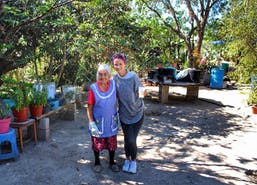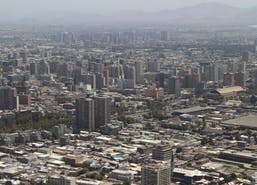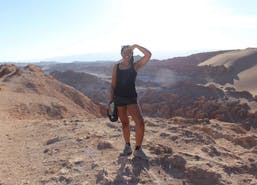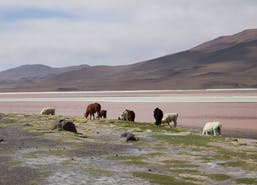Historical Malinalco and Cuauhtinchan
I am a huge Anthropology nerd so my trip to Malinalco was nothing less than outstanding. Malinalco is considered to be a ‘pueblo mágico’, or ‘magic town’. It is known as the location in which the goddess and sorceress, Malinalxóchitl, was abandoned by her brother, Huitzilopochtlli. Huitzilopochtlli was known as the leader of the Mexica people as well as the god of the sun. Looking over Malinalco, atop Cerro de Los Idols, is the archaeological zone of Cuauhtinchan, known as a place in which eagles and jaguars would feed the sun god with their own blood performing a kind of self-sacrifice.

In order to keep my stories straight, I did some digging online to find out more about the history of Malinalco and Cuauhtinchan. Cuauhtinchan is an ancient archeological site situated atop the steep mountainside of the Cerro de Los Idols (Hill of Idols). When I was looking into the history of Cuauhtinchan, however, I got confused. Some websites say it is an old Aztec site and some say it is a Mexica site. After more research, I learned that the difference between the two is that the Mexicas used to be Aztecs as well. Aztecs are the people who were from Aztlan. After the Aztecs settled into Coatepec, there was an argument amongst them. Some sided with Coyolxauhqui and some sided with her brother, Huitzilopochtli. After a battle between the two sides, the Huitzilopochtli changed their name to Mexicas to celebrate their victory and left in search of a new place to live. The site was originally inhabited by the Malinalca (worshippers of Malinalxóchtil) before it was conquered by the Mexicas (www.mexica.net/a>)

In order to get to Cuauhtinchan, we (my boyfriend, his family and I) took a two hour drive from Mexico City into Malinalco. Once there, we drove through some narrow cobblestone streets, the sides of which were decorated with colourful artisan shops. One thing I loved about Malinalco is that the town seems to overflow with flowers. There were even flowers toppling over rustic buildings and poking through the cobblestone paths. The whole town is sprawled out over the base of the mountain, Cerro de Los Idols, giving the streets a steady incline. I was out of breath before we even started the trek up to Cuauhtinchan.

We didn’t want to waste any time going into any of the tempting artisan shops until we had conquered the mountain. I was desperate to get up there before it got too hot. I’m not sure how effective this strategy was seeing as it was already boiling once we started out. I honestly don’t know if I have ever sweat so much in my life. We had to keep taking breaks every five minutes to catch our breath and chug our water.
Despite the mountain being steep, the steps being made of stone and my body turning into a puddle, it was all made worthwhile by the beautiful views. The sky was a clear blue and the brown and grey of the mountains provided a clean contrast against the bright green trees and cacti. There were also plenty of pink and red wild flowers growing up and down the pathway. Beyond that, we had a spectacular view of the whole town. Scattered along the 426 stairs up to the site were plaques detailing more of the site’s history. As a lover of languages, I was pleased to see that the plaques were not only written in Spanish and English but also in Nahuátl as well. Nahuátl is a Uto-Aztecan language still spoken today. In fact more than 1.5 million people still speak it which is more than any other indigenous language family in Mexico today. (www.mexico.sil.org/language_culture/aztec)

Once at the top of the steep and winding pathway, we finally got to see the Cuauhtinchan. It is made up of three different structures. One is a small pyramid, the other is a temple and the third is a series of steps and walls creating a large temple like floor plan. In the temple are three amazing stone carved statues of eagles and a carved jaguar pelt. In fact, the temple is named Cuauhcalli which literally means ‘House of Eagles’. The temple was carved directly into the mountain and is the “only known monolithic temple built by the Aztec.” This is where it is said that the eagles and jaguars would feed their own blood to the sun god, Huitzilopochtli. (uncoveredhistory.com/mexico/malinalco)

It was surreal to be able to set foot in a place that holds so many stories. I really enjoyed just sitting back on the pyramid and looking out over the town. It made me wonder what it must have looked like way back when the Mexicas first arrived there. At places like Malinalco, my imagination tends to go a little crazy thinking about what it must have been like long ago, and how many people have sat where I sat, wondering the same things, taking in the same views.

After cooling off in the shade and downing the rest of our water, we trekked back down the mountain and into town. The town is very colourful and full of artisan shops selling everything from handmade shoes, to blankets to succulents. I especially could not resist purchasing a handmade journal. The artisan even wrote, ‘Malinalco’ above the floral design for me!
Wandering down through the town, our stomachs rumbling, we decided to stop for lunch at Los Placeres. If you are going to Malinalco, I would definitely recommend this restaurant. It is absolutely gorgeous and the food is delicious, especially after such a steep hike. They also have vegetarian friendly options. Plus, there is also a gorgeous patio out back that we could not resist taking photos of as well. For dessert, we headed a few doors over to Malinalli to get ice cream and nieve. Nieve is Spanish for snow but in the context of dessert it refers to an ice-cream type treat made of water (lactose/dairy free). It was the perfect way to cool off after such a hot day. (losplaceresmalinalco.com) (www.malinalli.com.mx/)
If you are headed to Mexico City anytime soon, don’t forget to make a day trip out of Malinalco! I promise it will be well worth your time.




